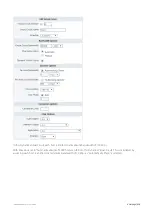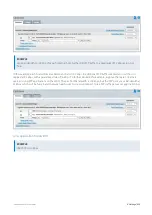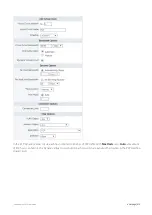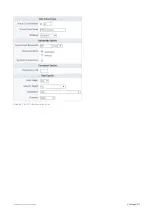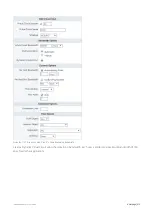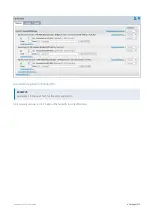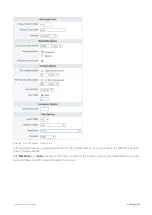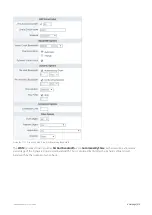
Exinda Network Orchestrator
4 Settings
|
400
1.
Go to
Configuration > System > Setup > Monitoring
.
2.
In the
Monitoring Options
section, modify the
Dual-bridge bypass
setting. If checked, it is enabled.
Controlling Traffic based on Users and Groups
After reviewing the traffic patterns of the users, it may be necessary to implement optimization policies to ensure a
positive user experience for key applications or traffic types. By limiting the traffic usage for a specific group of users,
network availability can be increased for other user groups.
NOTE
Active Directory must be configured before optimization policies can target specific users and groups.
Integrate with Active Directory
Optimize Traffic Based on Users and Groups
Create policies that affect the traffic based on the source or destination host.
1.
On your browser, open the Exinda Web UI (
https://UI_IP_address
).
2.
Key-in the
User Name
and
Password
.
3.
Click
Login
. The Exinda Web UI appears.
5.
Click
Configuration > Optimizer > Policies
.
6.
Type a name for the policy.
7.
Set the required bandwidth and acceleration parameters.
8.
In the Filter Rules area, select the network user or network group object in the Host source and destination fields, and
specify the ToS/DSCP or Application traffic to be affected.
9.
Click
Create New Policy
.
NOTE
Once the desired policies are in place on all Exinda appliances, restart the Optimizer. On the appliance status bar,
click
Restart
.
4.1.9 IPMI Configuration
The Intelligent Platform Management Interface (IPMI) is a specification for remote server management. It is a way to
manage a computer by using a network connection to the hardware rather than to an operating system or login shell.
This allows you to manage a computer that may be powered off or is otherwise unresponsive. An IPMI-enabled server
contains a separate, dedicated micro-controller, called Baseboard Management Controller (BMC), to perform operations
such as remote power off power on, or to access the console (serial-over-LAN). The data is made available over the LAN
using either a shared or dedicated NIC. The IPMI interface must be assigned a dedicated IPv4 address.
To configure the appliance to be managed via IPMI, IPMI must be enabled and the IPv4 address and gateway must be
specified, as well as the administrator credentials. You can manually set these values or you may use DHCP to configure
the IPv4 address. Note that although the IPMI LAN interface may be the same as the appliance's eth1 hardware interface,
a separate IPv4 address is required.
Summary of Contents for EXNV-10063
Page 369: ...Exinda Network Orchestrator 4 Settings 369 ...
Page 411: ...Exinda Network Orchestrator 4 Settings 411 Screenshot 168 P2P OverflowVirtualCircuit ...
Page 420: ...Exinda Network Orchestrator 4 Settings 420 Screenshot 175 Students OverflowVirtualCircuit ...























